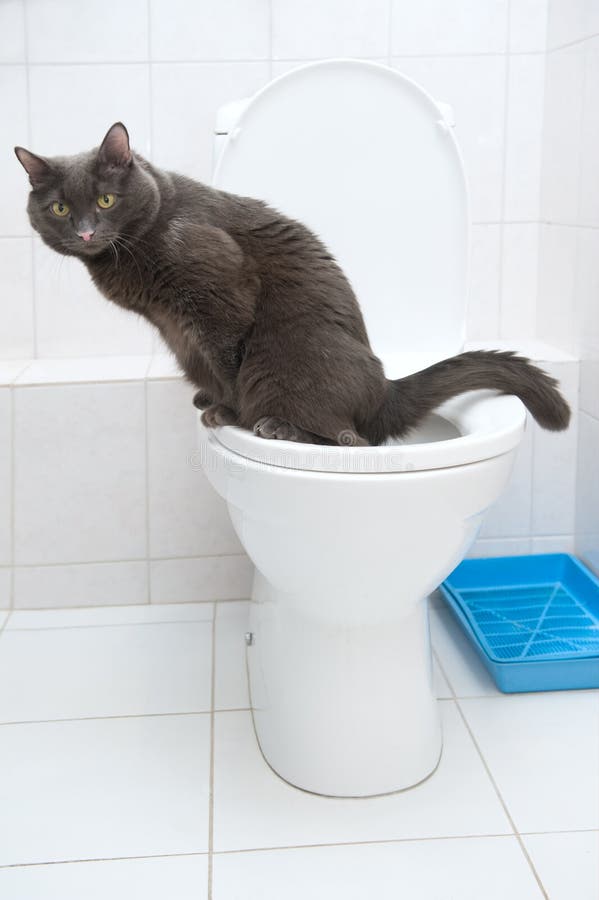The Dangers of Flushing Cat Poop Down Your Toilet - Tips for Safer Disposal
The Dangers of Flushing Cat Poop Down Your Toilet - Tips for Safer Disposal
Blog Article
Almost everyone has got their unique assumption when it comes to How to Dispose of Cat Poop and Litter Without Plastic Bags.
Intro
As cat owners, it's vital to be mindful of how we dispose of our feline close friends' waste. While it may seem hassle-free to purge feline poop down the bathroom, this technique can have detrimental consequences for both the environment and human wellness.
Ecological Impact
Flushing cat poop presents harmful microorganisms and parasites right into the water supply, posturing a substantial risk to marine ecological communities. These pollutants can negatively influence aquatic life and concession water quality.
Health and wellness Risks
In addition to ecological worries, purging feline waste can additionally pose health and wellness threats to human beings. Pet cat feces may contain Toxoplasma gondii, a bloodsucker that can cause toxoplasmosis-- a potentially severe ailment, especially for expecting women and people with weakened immune systems.
Alternatives to Flushing
Thankfully, there are safer and a lot more accountable means to take care of cat poop. Think about the complying with choices:
1. Scoop and Dispose in Trash
The most typical approach of disposing of feline poop is to scoop it into a biodegradable bag and throw it in the garbage. Make sure to make use of a committed clutter scoop and take care of the waste promptly.
2. Usage Biodegradable Litter
Select biodegradable pet cat trash made from products such as corn or wheat. These clutters are eco-friendly and can be securely gotten rid of in the trash.
3. Bury in the Yard
If you have a yard, think about burying feline waste in an assigned location far from vegetable gardens and water sources. Make sure to dig deep enough to stop contamination of groundwater.
4. Mount a Pet Waste Disposal System
Purchase a pet dog waste disposal system particularly designed for cat waste. These systems use enzymes to break down the waste, reducing smell and ecological impact.
Final thought
Responsible family pet possession extends beyond offering food and sanctuary-- it likewise includes appropriate waste management. By avoiding flushing cat poop down the commode and going with alternate disposal techniques, we can lessen our environmental impact and secure human health.
Why Can’t I Flush Cat Poop?
It Spreads a Parasite
Cats are frequently infected with a parasite called toxoplasma gondii. The parasite causes an infection called toxoplasmosis. It is usually harmless to cats. The parasite only uses cat poop as a host for its eggs. Otherwise, the cat’s immune system usually keeps the infection at low enough levels to maintain its own health. But it does not stop the develop of eggs. These eggs are tiny and surprisingly tough. They may survive for a year before they begin to grow. But that’s the problem.
Our wastewater system is not designed to deal with toxoplasmosis eggs. Instead, most eggs will flush from your toilet into sewers and wastewater management plants. After the sewage is treated for many other harmful things in it, it is typically released into local rivers, lakes, or oceans. Here, the toxoplasmosis eggs can find new hosts, including starfish, crabs, otters, and many other wildlife. For many, this is a significant risk to their health. Toxoplasmosis can also end up infecting water sources that are important for agriculture, which means our deer, pigs, and sheep can get infected too.
Is There Risk to Humans?
There can be a risk to human life from flushing cat poop down the toilet. If you do so, the parasites from your cat’s poop can end up in shellfish, game animals, or livestock. If this meat is then served raw or undercooked, the people who eat it can get sick.
In fact, according to the CDC, 40 million people in the United States are infected with toxoplasma gondii. They get it from exposure to infected seafood, or from some kind of cat poop contamination, like drinking from a stream that is contaminated or touching anything that has come into contact with cat poop. That includes just cleaning a cat litter box.
Most people who get infected with these parasites will not develop any symptoms. However, for pregnant women or for those with compromised immune systems, the parasite can cause severe health problems.
How to Handle Cat Poop
The best way to handle cat poop is actually to clean the box more often. The eggs that the parasite sheds will not become active until one to five days after the cat poops. That means that if you clean daily, you’re much less likely to come into direct contact with infectious eggs.
That said, always dispose of cat poop in the garbage and not down the toilet. Wash your hands before and after you clean the litter box, and bring the bag of poop right outside to your garbage bins.
https://trenchlesssolutionsusa.com/why-cant-i-flush-cat-poop/

I'm just very intrigued by How to Dispose of Cat Poop and Litter Without Plastic Bags and I am assuming you appreciated the entire blog posting. Enjoyed reading our review? Please share it. Help others locate it. I am grateful for your time. Kindly stop by our website back soon.
Check Us Out Report this page